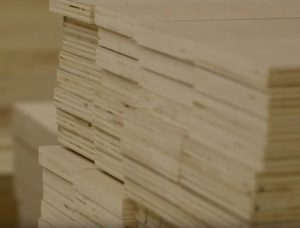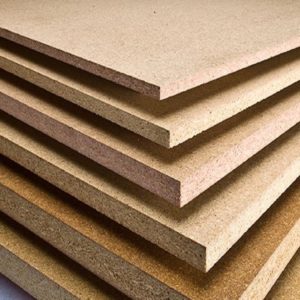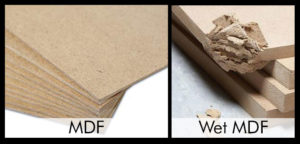
Casegoods Construction 101
4 Minute Read
Chapter 1: Raw Materials – Wood is Good.
Your furniture is only as good as the quality of its components. Regardless of how attractive and stylish your dorm room is, the biggest influence in your decision-making process should be the product quality.
Today, we’re talking about the raw materials that are the foundation of your furniture. Have you had issues with your furniture’s longevity on campus? If you’re experiencing issues with your furniture chipping, warping, deteriorating after coming in contact with moisture, or damaged from a slight accidental over-torque, you may want to look at what materials are being used in your furniture.
Raw Materials: Best to Worst.
Plywood/All-Wood Products 
Plywood is the Lamborghini of furniture substrates. Plywood is made from several layers, or plies, of wood glued together. Each ply’s grain direction runs at right angles to the one next to it, helping to provide strength and stability throughout the panel. High quality, furniture grade plywood is made from several layers of thinner plies to provide the most strength and durability. To ensure the best quality for your furniture, you should look for plywood with nine plies or more.
Not only does plywood offer a warmer, more organic feel for your students’ rooms, furniture made from plywood is lighter weight and durable enough to withstand the rigors of student living. This stronger, more reliable option for your furniture will also provide a sturdier, tougher base for holding assembly screws and is significantly less likely to experience any warping or deflection from exposure to moisture.
While products made from plywood and superior assembly methods may have a higher price tag up front, your ROI will be undeniable after easily 10+ years of wear and tear.
Furniture Grade/High Compression Particleboard 
If customers are looking for a painted or patterned look, instead of a stained wood, their best option would be a furniture grade/high compression particleboard.
High compression particleboard is made from large, coarse wood fibers glued together with various resins, and then subjected to high heat and pressure to form panels.
While high compression particleboard can offer a more consistent, uniform appearance in your furniture, this substrate is more prone to chipping, is heavier, and is extremely sensitive to moisture. Additionally, because edges chip more easily, the design/style of your furniture could be limited to a more basic/squared-off look.
If you decide to proceed with a particleboard product, it is highly encouraged that you confirm the grade/quality of the particleboard with your vendor, as well as check to make sure all exposed edges, such as on the back and bottom of your casegoods, are banded with an edge banding to provide protection from moisture.
Furniture made from high compression particleboard can often be purchased at a mid-level price range.
Low-Grade MDF (Medium-Density Fiberboard) 
Furniture made from low-grade MDF should essentially be your last option for your student housing needs. Like high compression particleboard, MDF is made from various wood fibers glued together, but the wood fibers are significantly smaller (like flour) and they’re not exposed to the same level of heat and pressure, making these panels softer and less durable.
Examples of MDF can easily be seen when purchasing ‘Some Assembly Required’ furniture from big box retail chains and imports from Asia.
MDF products are significantly heavier, chip easily, and will very quickly disintegrate from even the slightest expose to moisture. Additionally, because MDF is a much softer material, hardware such as screws and camlocks will not have a sturdy anchor for assembly of furniture.
While furniture made from low-grade MDF may have an extremely attractive price tag, buyers should expect to spend more with replacement purchases and/or product repairs over the long run.
Course Summary
When researching and making a decision regarding the furniture on your campus, it’s important to consider what your furniture is made of and how long you want it to last. It’s easy to fall in love with the lesser expensive upfront cost of inferior MDF products, but if you’re worried about costly replacements and frustrated facilities employees, a better solution for your students would be plywood (best case scenario) or at least a high compression particleboard.
Do you have questions about how to determine the best product for your campus? We’re happy to help! Send us an email or call us at 800.233.8953 to learn more about quality materials and construction methods.








